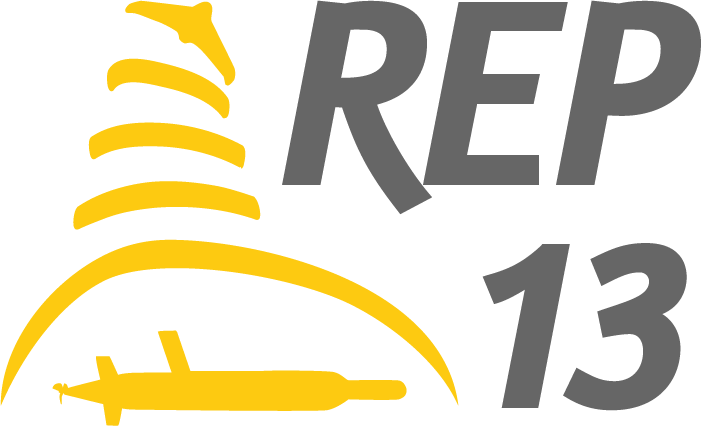Thursday the 11th was an eventful day with complex choreography with multiple assets in the water and air, sometimes simultaneously. NRP Bacamarte resembled a real operational floating mission control central with hectic and non-stop activity.
The very first activity of the day (as usual) was deploying the LBL (Long Base Line) sensors for AUV navigation in the water column. The daily deployment has become a simple ritual with Navy divers ferrying FEUP researchers with a hand-held GPS device for precise location of the beacons which are dropped with an anchor and flotation. On LBL deployment, one of the AUVs was dispatched on a search and rescue 'mission' for the Maritime Police; earlier and separately the Police had sunk a mannequin (graciously called 'Oscar') with the intent that the AUVs sonar and still camera (with strobes) would find the 'body'. Noptilus 1 in conjunction with a mission later in the afternoon with the Dolphin AUV, repeatedly mapped and made contact with 'Oscar' and other packages that the authorities had meant for us to find.
Simultaneously, the Xtreme 2 AUV went out to 125 m of depth 6km from the Bacamarte, also with the help of the Maritime Police. The primary test was to navigate in open waters with no DVL lock to the bottom. Despite a depth ostensibly out of range of the DVL, data analysis showed that bottom lock was obtained and vehicle navigation was 'proper' (the opposite of what we wanted to demonstrate to ourselves for deep water navigation). In the process, we discovered a compass calibration error primarily when a fixed transect with angular turns failed to execute, even as the AUV was able to do straight lines. Recalibration was postponed for the following day.
In the midst of these activities, two UAS missions were flown. X8-01 flew well after re-flashing its memory. A previous day's flight had shown high temperatures near 60 degrees (celsius) where the electronics was housed. Consequently the UAS team punched a spare hole in the styrofoam airframe to have cool air flow over the electronics. No temperature anomalies were seen consequently and stability of the platform was well within expected parameters.
Frederik Leira (NTNU) and Kanna went on a RHIB to test the IR camera that was brought for testing on a UAS. Since this payload was meant to be interfaced differently than other sensors, X8-02 which was still being pulled together, was not ready for flight. It was decided a simple test of the camera on a pole on a coastal (thermal) front would be tested. The Sesimbra area has a number of such frontal zones; Leira and Kanna went out to try to see what the camera could 'see' in this simple experiment. It was discovered that that the focal plane was set for a high(er) flying UAV than the small pole being used and consequently the results were inconclusive.











